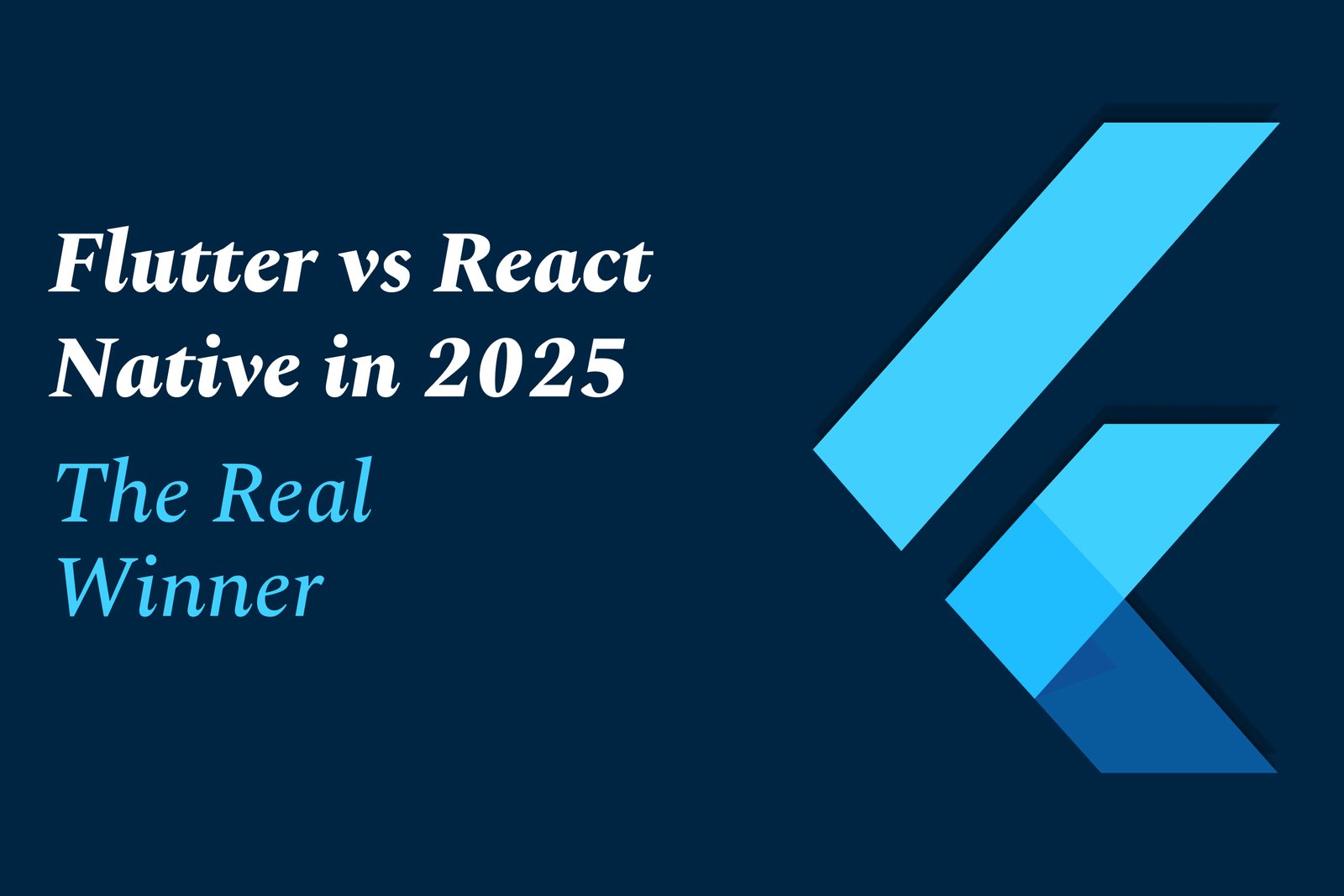Flutter vs React Native in 2025: The Real Winner
In 2025, Flutter and React Native remain top cross-platform frameworks. Flutter excels in performance and smooth UI with Dart, while React Native offers a vast JavaScript ecosystem and rapid development. The best choice depends on project needs, skills, and app complexity.
Flutter vs React Native in 2025: The Real Winner
1 ) Introduction to the Flutter vs React Native Debate in 2025
The mobile app development space remains fiercely competitive in 2025, with businesses prioritizing frameworks that optimize performance, scalability, and user experience. Flutter (by Google) and React Native (by Facebook/Meta) have each matured significantly, offering distinct benefits for cross platform mobile development from single codebases. Choosing the right framework can critically impact app speed, development efficiency, and maintenance.
2 ) Key Similarities Between Flutter and React Native
Cross Platform Development: Both allow one codebase to target iOS and Android, reducing development and maintenance costs and speeding up time to market.
Open Source with Strong Communities: Both enjoy vibrant, growing communities providing ongoing support, libraries, and tools.
Hot Reload Feature: Enables developers to instantly see code changes without full restarts, accelerating debugging and iterative UI improvements.
Near Native Performance: Both frameworks are designed to deliver high quality, near native app experiences.
3 ) Performance and Rendering Comparison
Flutter’s Advantage: Uses the Skia rendering engine with direct GPU rendering, bypassing native UI components. Combined with Ahead of Time (AOT) compilation of Dart code, this gives Flutter superior control and smoother animations (60 120 fps), making it ideal for graphics intensive apps or real time updates.
React Native’s Progress: The Hermes JavaScript engine compiles code to bytecode, cutting startup time and memory use. Concurrent Rendering facilitates smoother UI updates by incremental rendering, narrowing the performance gap. However, Flutter still leads in raw animation performance, especially for demanding applications.
4 ) Programming Languages and Ecosystem
Flutter: Uses Dart, a strongly typed language with growing popularity tied to Google tools like Firebase. While Dart's developer base is smaller, it offers robust features for reliable high performance code.
React Native: Relies on JavaScript/TypeScript, benefiting from a massive global developer community. JavaScript’s ubiquity makes onboarding easier, and TypeScript enhances maintainability through static typing.
5 ) Current Popularity Trends
Flutter leads slightly with 46% developer usage due to performance advantages and a rich widget library, also aided by hot reload.
React Native remains widely popular at 35%, favored especially by developers transitioning from web due to JavaScript familiarity.
6 ) Use Cases and Suitability
Flutter: Best suited for apps requiring pixel perfect, fluid UI and heavy animations (e.g., gaming, multimedia). Perfect for startups and enterprises prioritizing look and feel and fast performance.
React Native: Great choice for apps where JavaScript expertise exists, with moderate animation demands, leveraging a large ecosystem and mature tooling.
7 ) Conclusion: Who Is the Real Winner in 2025?
There is no one size fits all answer. Flutter’s superior performance and design consistency make it a strong contender for graphics heavy, high performance apps. React Native’s mature ecosystem and JavaScript foundation continue to appeal to teams prioritizing rapid development and broad community support. Ultimately, the decision depends on specific project requirements, existing skillsets, and priorities around UI complexity, performance needs, and long term maintenance.
https://justacademy.in/news-detail/speech-recognition-in-flutter-using-ai
https://justacademy.in/news-detail/flutter-sdk-updates-in-july-2025
https://justacademy.in/news-detail/flutter’s-new-devtools-make-debugging-easier-than-ever
https://justacademy.in/news-detail/flutter-lts-release:-what-it-means
https://justacademy.in/news-detail/flutter-game-development-is-gaining-momentum
Related Posts
In 2025, top Angular libraries offer modern, feature-rich components and tools for building dynamic web apps. From powerful data grids to low-code platforms like UI Bakery, these libraries enhance development speed, UI design, and scalability, making them essential for Angular developers.
Migrating from AngularJS to Angular 17 involves gradually upgrading your app by running both frameworks together using tools like ngUpgrade, rewriting components in TypeScript, and adopting Angular’s modern architecture to enhance performance, maintainability, and long-term support.
Angular state management tools help organize and handle app data efficiently, improving scalability and maintainability. Popular options include NgRx for robust, RxJS-based patterns, and newer Signal Store solutions that offer simpler, reactive approaches integrated tightly with Angular’s latest features.
RxJS in Angular empowers developers to manage asynchronous data streams with powerful operators like `forkJoin`, `combineLatest`, and `zip`. Mastering these key operators in 2025 is essential for building efficient, reactive applications that handle complex event sequences seamlessly.
Angular performance optimization in 2025 focuses on improving app speed and responsiveness by using techniques like OnPush change detection, lazy loading, efficient data caching, and AOT compilation. These practices reduce load times, enhance user experience, and ensure scalable, fast Angular applications.
In 2025, Angular remains preferred for large-scale, enterprise apps with its robust, all-in-one framework, while Vue attracts developers seeking simplicity and fast development for smaller projects. Both frameworks excel, with choice driven by project needs and team expertise.
Angular Signals are a new reactive primitive in Angular 16 that enable fine-grained, efficient change detection by automatically tracking dependencies and updating only affected parts of the UI. They simplify state management and boost app performance, revolutionizing Angular's reactivity model.
Angular interview questions to prepare in 2025 focus on core concepts like components, directives, data binding, routing, and dependency injection, along with TypeScript mastery and latest Angular features to ensure strong practical knowledge for building scalable, efficient web applications.
AngularJS reached its official end of support in January 2022, meaning no further updates or security patches. To ensure app security and performance, developers should consider migrating to modern Angular versions or seek third-party long-term support options if immediate migration isn’t possible.
The Angular Roadmap 2025 highlights upcoming features focused on improving developer experience and performance, including zoneless Angular, Signals integration, enhanced Forms, async data handling, improved HMR, and expanded Angular Material/CDK enhancements, driving modern, efficient web app development.










